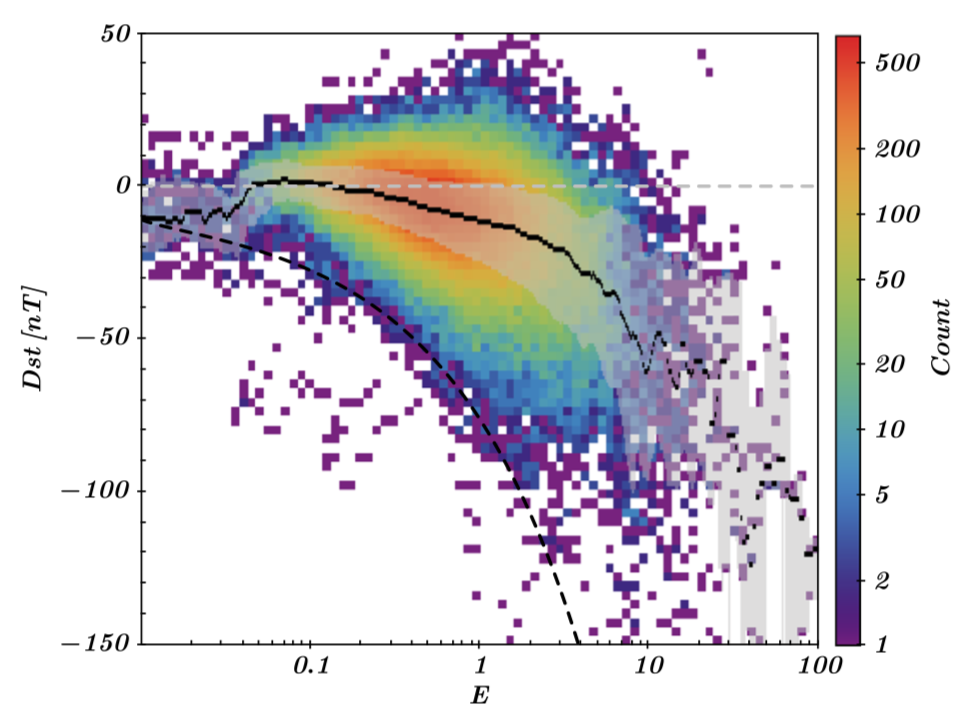Papers from SWICo members
Telloni, Daniele; Carbone, Francesco; Antonucci, Ester; Bruno, Roberto; Grimani, Catia; Villante, Umberto; Giordano, Silvio; Mancuso, Salvatore; Zangrilli, Luca
This paper addresses the investigation of the interaction of the solar wind energy with the Earth’s magnetosphere, by studying its correlation with the disturbance storm time (Dst) index, a proxy of the geomagnetic activity. Some relevant parameters of the solar wind (the bulk speed and the z-component of the interplanetary magnetic field) are explored in the energy-Dst space.

It results that (I) the solar wind energy and the geomagnetic activity are strictly related, with the coronal mass ejections representing the most energetic and geoeffective driver; (II) the slow solar wind has negligible effects on Earth regardless of its energy content, whereas high-speed streams may induce severe geomagnetic storming depending on the advected energy; and (III) while at low and mid energies, geomagnetic disturbances are induced provided the magnetic reconnection between the interplanetary and terrestrial magnetic fields occurs, high-energy solar wind plasma can impact Earth even without reconnecting with the geomagnetic field at the dayside magnetopause. The most significant result in the framework of space weather science resides in the observational evidence that the Earth’s magnetosphere has a maximum response to the energetic content of the solar wind, which leads to the derivation of an empirical law allowing the proper forecast of the upper limit of the intensity of any geomagnetic disturbance on the basis of the solar wind energy derived in situ at the Lagrangian point L1.
Publication: Telloni D., Carbone F., Antonucci E., Bruno R., Grimani C., Villante U., Giordano S., et al., 2020, ApJ, 896, 149.
https://iopscience.iop.org/article/10.3847/1538-4357/ab91b9/pdf
